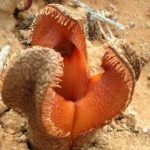Amazing Design of the Emperor Penguin
Amazing Design
Thermoregulation
Penguins have a remarkable capacity to regulate their body temperature despite the extreme external temperatures. Their unique overlapping feathers are highly specialized, providing good insulation, waterproofing, and wind resistance. The peculiar structure of the feathers provides extra thickness, and the complex network of blood vessels in their wings also helps the birds thermoregulate.
Molting
Penguins even have a unique molting pattern, retaining their old feathers until the new ones grow in. Their insulation and waterproofing are compromised during this time, so they must remain on land until their once-a-year molt is completed, lasting between 13 and 34 days, depending on the species.
Water movements
Penguins have three kinds of movement in water—surface swimming, porpoising, and underwater “flying.” Surface swimming is the least efficient. When swimming on the surface, the head is often the only part that is visible. The markings on the head facilitate sight recognition. Each species has its own distinctive pattern—a white patch on the crown, a brightly colored bill, or a crest. Since air resistance is less than water, porpoising out of the water at intervals increases the efficiency of a penguin’s swimming and possibly enables it to escape predators. But the penguin is most efficient when swimming underwater, which is really a form of underwater “flying,” accomplished with its unique wings.
Fascinating Features
Indeed, the most striking thing about penguins is their wings, “which are unlike the wings of any other bird. The difference between them and the wings of other birds is that they are designed to fly through the water. The elbow and wrist joints are fused and immobile, and the movement of the shoulder is limited, so that the bird must hang its wings by its sides rather than folding them over its back when it is at rest.”
The unique structural design of their wing bones enables penguins to be masters of underwater “flight.” In addition, their wing muscles are among the largest and strongest of any bird. Indeed, an adult emperor penguin is quite capable of breaking human leg bones with a single blow of its wing.
Tiny air bubbles cling to their feathers as they dive, significantly reducing the water’s drag on their bodies, making movement through the water energy efficient. Even their body shape contributes to this energy efficiency. Polar researcher Rudolf Bannasch stated that the penguin’s body is a natural torpedo, economical on fuel.




Thank you!!!!! Gut Shabbes!